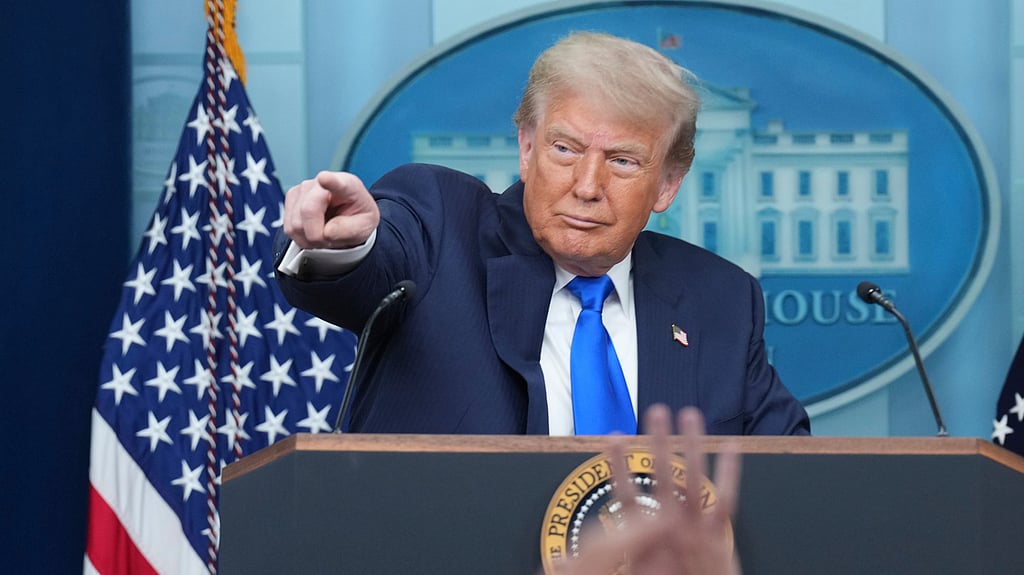Trump's Tariff Deadline Looms: Japan, South Korea, and Asia Brace for August 1 Hike
Tokyo | July 6, 2025 — Former U.S. President Donald Trump has issued fresh ultimatums to 14 countries, primarily in Asia, warning that higher import tariffs will take effect on August 1 unless new trade deals are finalized.
The move has rattled key U.S. trading partners — especially Japan, South Korea, Thailand, and Indonesia — with some hoping for last-minute negotiations while others have hardened their stance against what they describe as "aggressive economic coercion".
This is the second time in 2025 that Trump has set a tariff deadline. In April, a 90-day postponement was granted for most nations. Now, with that window closing, the pressure is intensifying.
Who’s Being Targeted and Why?
The countries in question were selected due to their large trade surpluses with the United States. Among them:
- 🇯🇵 Japan: $68.5 billion surplus in 2024
- 🇰🇷 South Korea: $66 billion
- 🇹🇭 Thailand: $45.6 billion
- 🇮🇩 Indonesia: $17.9 billion
Trump has repeatedly claimed these nations have “unfair trade practices” and says new tariffs are necessary to protect American industries and reduce the deficit.
🇰🇷 South Korea: Hoping for a Deal
South Korea is already reeling from previous U.S. levies on steel and automobiles, and now faces an additional 25% tariff on its remaining exports.
Despite the pressure, Seoul remains cautiously optimistic. National Security Adviser Wi Sung-lac, after a meeting with U.S. Secretary of State Marco Rubio, said:
“Washington hopes both sides can reach an agreement before August 1. We’re coordinating closely for tangible and mutually beneficial outcomes.”
South Korea, a global leader in shipbuilding, is keen to avoid additional trade disruptions and sees negotiations as the best path forward.
🇯🇵 Japan: Holding Firm Amid Pressure
Japan, one of America’s strongest allies and largest foreign investors, stands to lose billions if the tariffs are enforced — particularly in the auto sector. The new hike would increase tariffs on Japanese cars to 25%, up from the 24% announced in April.
Prime Minister Shigeru Ishiba expressed deep regret over Trump’s warning letter, but maintained a defiant tone.
“The Japanese government has avoided making easy compromises. We firmly demand what must be demanded and protect what must be protected,” Ishiba reportedly told his cabinet.
Japan’s tariff envoy, Ryosei Akazawa, added that Tokyo refuses to negotiate at the expense of its farmers, particularly on sensitive products like rice.
Trump has long criticized Japan for not opening its markets sufficiently, especially in the agriculture and automobile sectors. But Japan’s response suggests that it has no intention of backing down to U.S. pressure.
Asia's Trade Crossroads
Thailand and Indonesia have yet to officially respond to Trump’s letters, but trade observers suggest similar pressures are being applied to these smaller but significant U.S. trade partners.
The Thai Commerce Ministry, according to sources, is evaluating whether to send a negotiation team to Washington ahead of the August deadline.
Meanwhile, Indonesian officials are reportedly alarmed by the impending tariff hikes, particularly as Jakarta is trying to bolster its electronics and textile exports amid global economic headwinds.
What’s At Stake?
- Economic uncertainty: Sudden tariff increases could lead to supply chain disruptions, inflation, and declining export revenues for Asian economies.
- Political tensions: The pressure tactic may backfire diplomatically, straining long-standing alliances.
- Global markets: Investors are watching closely as tariff deadlines often trigger volatility in currency and commodity markets.
🇺🇸 Trump's Strategy: High-Stakes Deadlines
Trump has framed the tariff threats as a way to “level the playing field” and reclaim U.S. manufacturing strength.
In a recent interview, U.S. Treasury Secretary Scott Bessent stated:
“President Trump will send letters to countries that don’t move forward. If they fail to act, they’ll revert to the April 2 tariff levels starting August 1.”
This may also mark the return of Trump-era trade tactics that rely heavily on bilateral deals rather than multilateral frameworks.
What Next?
-
A final decision on these tariffs is expected in the coming weeks.
-
Negotiations are reportedly underway with some countries, though Japan appears to be digging in its heels.
-
If no agreements are reached, the 25% tariffs will likely go into effect, raising consumer prices and causing ripple effects through the global economy.

